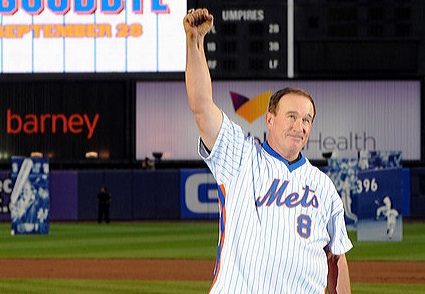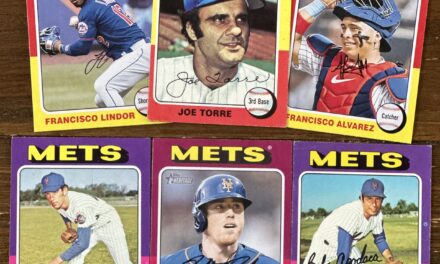
He was one of four catchers to reach 300 homers, 2,000 hits, 1,000 runs batted in, and 1,000 runs scored. He remains second among all catchers with a 26.1 defensive WAR and fourth with a 56.3 offensive WAR. So how come it took Gary Carter so long to get into the Hall of Fame?
Only the writers who didn’t vote for the 11-time All-Star can really answer that.
But Gary’s call to Cooperstown finally came after an agonizing six-year wait. He became the first — and to this date, only — member of the famed 1986 Mets to be inducted. Joining him was Eddie Murray, a Met from 1992-93.
While he won his only World Series title in New York, the bulk of Carter’s Hall-worthy performance came in Montreal. He spent the first 10 seasons of his 18-year career in Canada, where he developed into the game’s premiere catcher (winning three Gold Glove Awards and slugging 215 home runs) while cementing national hero status.
So while it was no surprise the Hall of Fame decided Gary would wear an Expos hat on his plaque, the team might have been different if it had been up to him.
”I’m very torn between both cities, primarily because I played 11 years in Montreal but I played five glorious years in New York,” Carter said shortly after the election. ”I can’t forget about that.”
Carter wasn’t just a great player but a durable one as well. At the time of his induction, he had played in a National League record 2,056 games behind the plate and held major league marks for career putouts (11,785) and total chances (12,988) by a catcher.
The durability started to fade during his time in New York, but by then he got what he came for: a championship ring. A stunning trade from Montreal to New York in December 1984 turned the Mets from hopeful contenders into bonafide contenders. In 1985, Carter overcame damaged knees to hit 32 homers and drive in 100 runs as New York fell just short of St. Louis in the NL East race.
His last great season was in ’86, but it ended in storybook fashion. He set a franchise record with 105 RBIs. More importantly, the Mets had 108 wins to cruise into the playoffs. Carter delivered crucial hits in October — none more than the single to keep Game 6 of the World Series alive.
He moved on from the Mets after 1989 and finished his career with the Giants, Dodgers, and then a last hurrah with the Expos in 1992.
In his first year of eligibility — 1998 — he missed election by 155 votes. The next year, thanks to the addition of several first-time candidates, he fell 205 short. Over the next three years, he inched closer — missing out by 127, then 53, and an excruciating 11 votes shy in 2002.
Carter’s eventual election evoked memories from Expos fans and Mets fans alike. Those memories became more poignant when he succumbed to brain cancer on February 16, 2012. In the time since his passing, Carter’s legacy is not only of an outstanding player but an exemplary person who had a love of the game like few others — if any. He’s a Hall of Famer in every respect.















